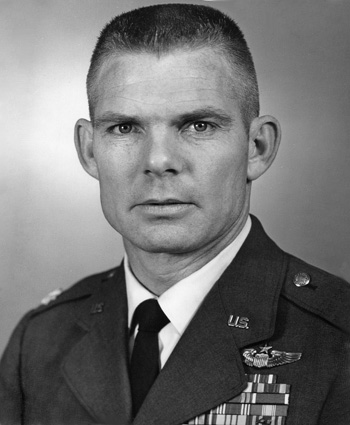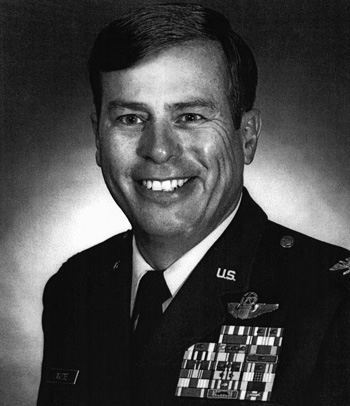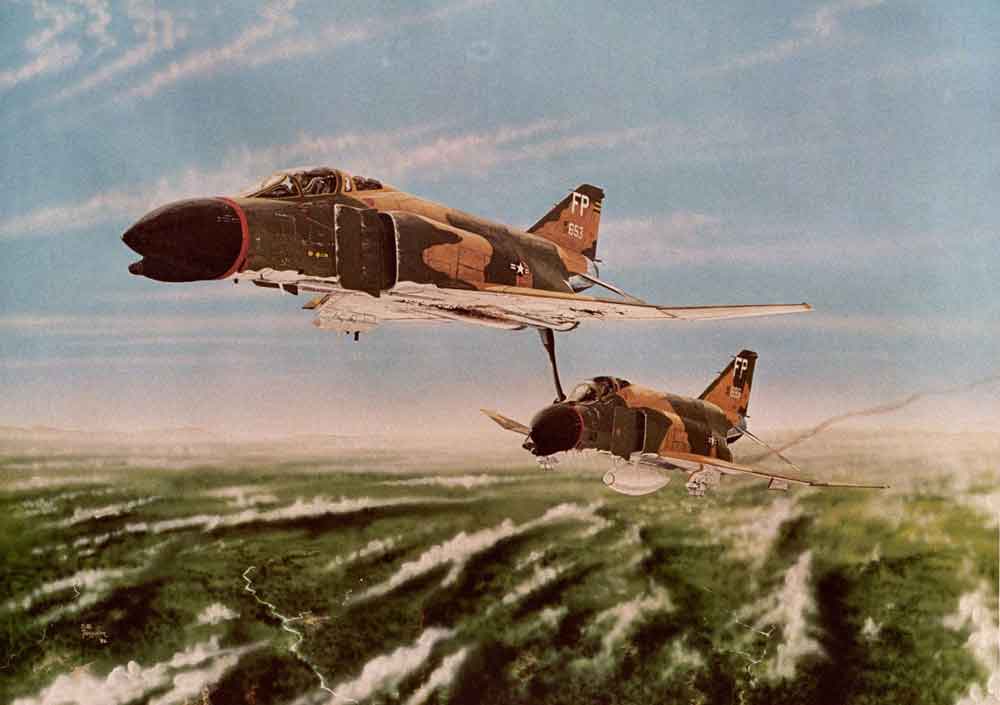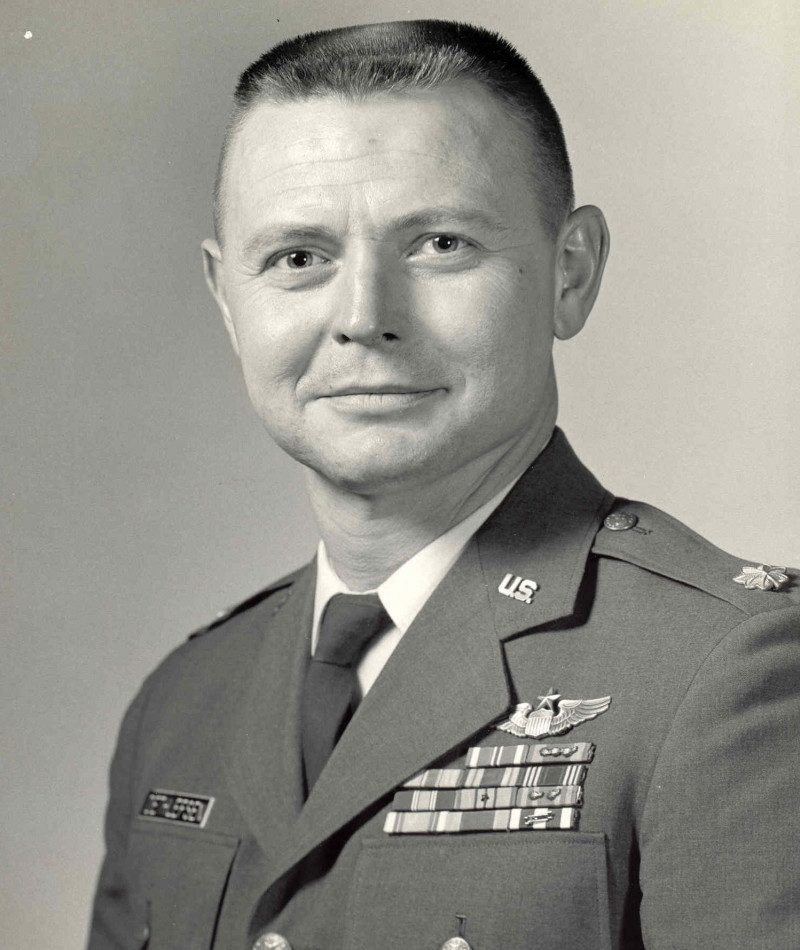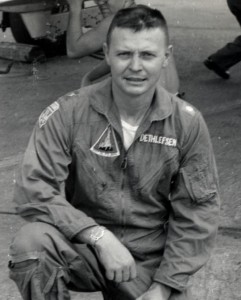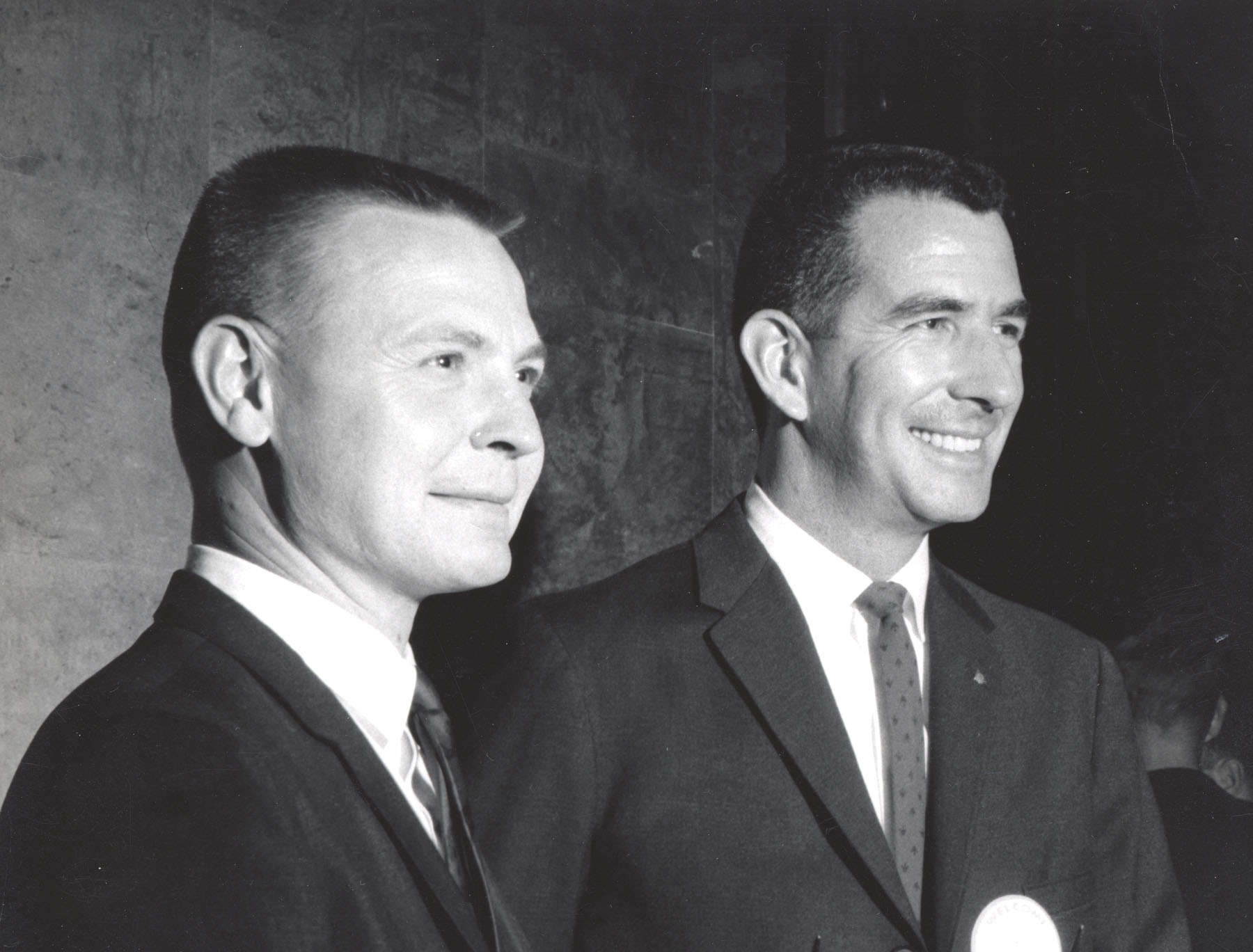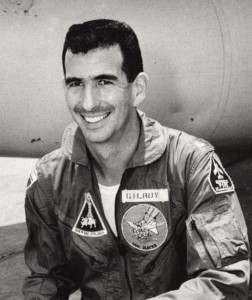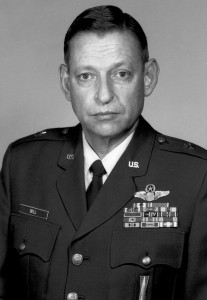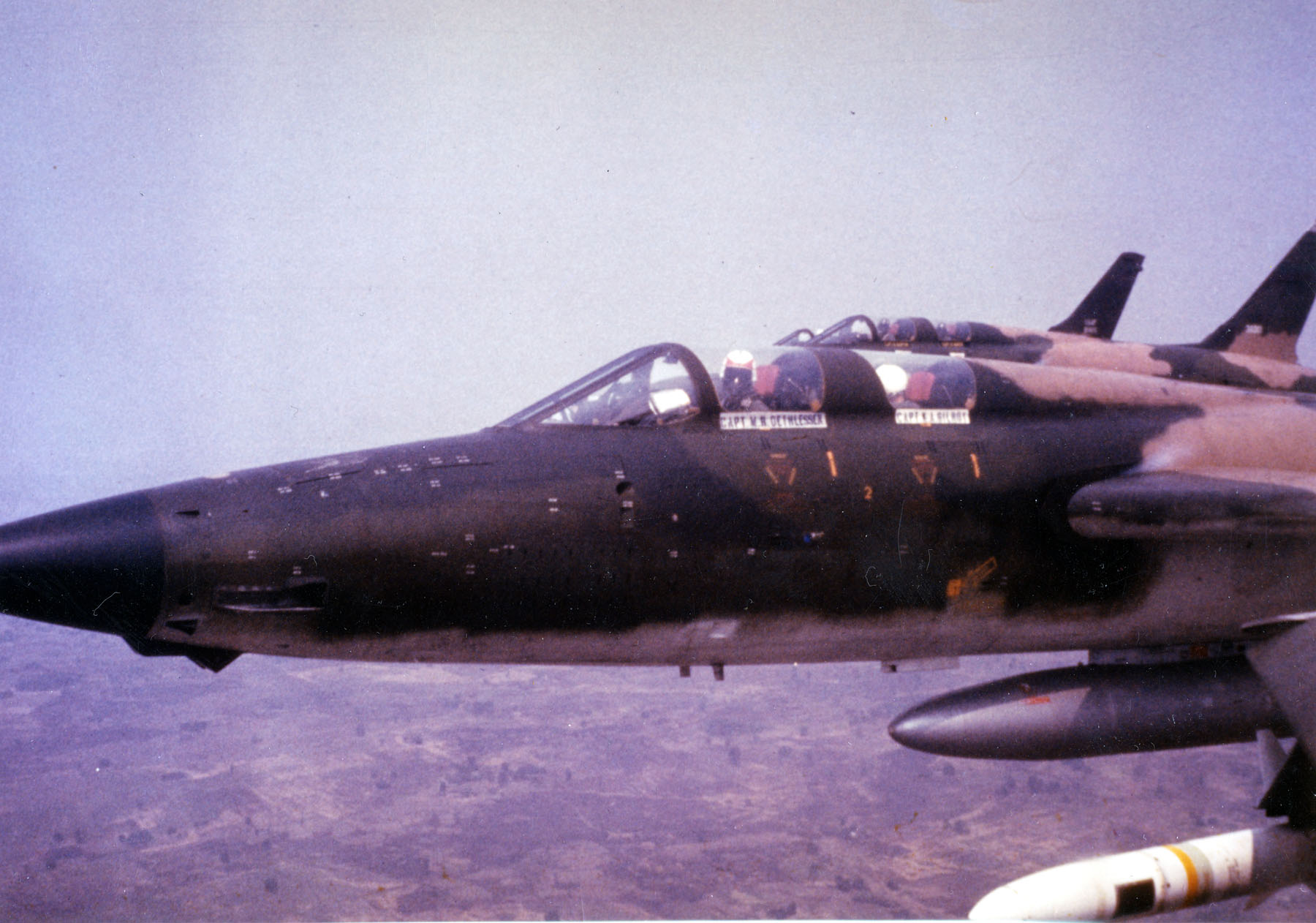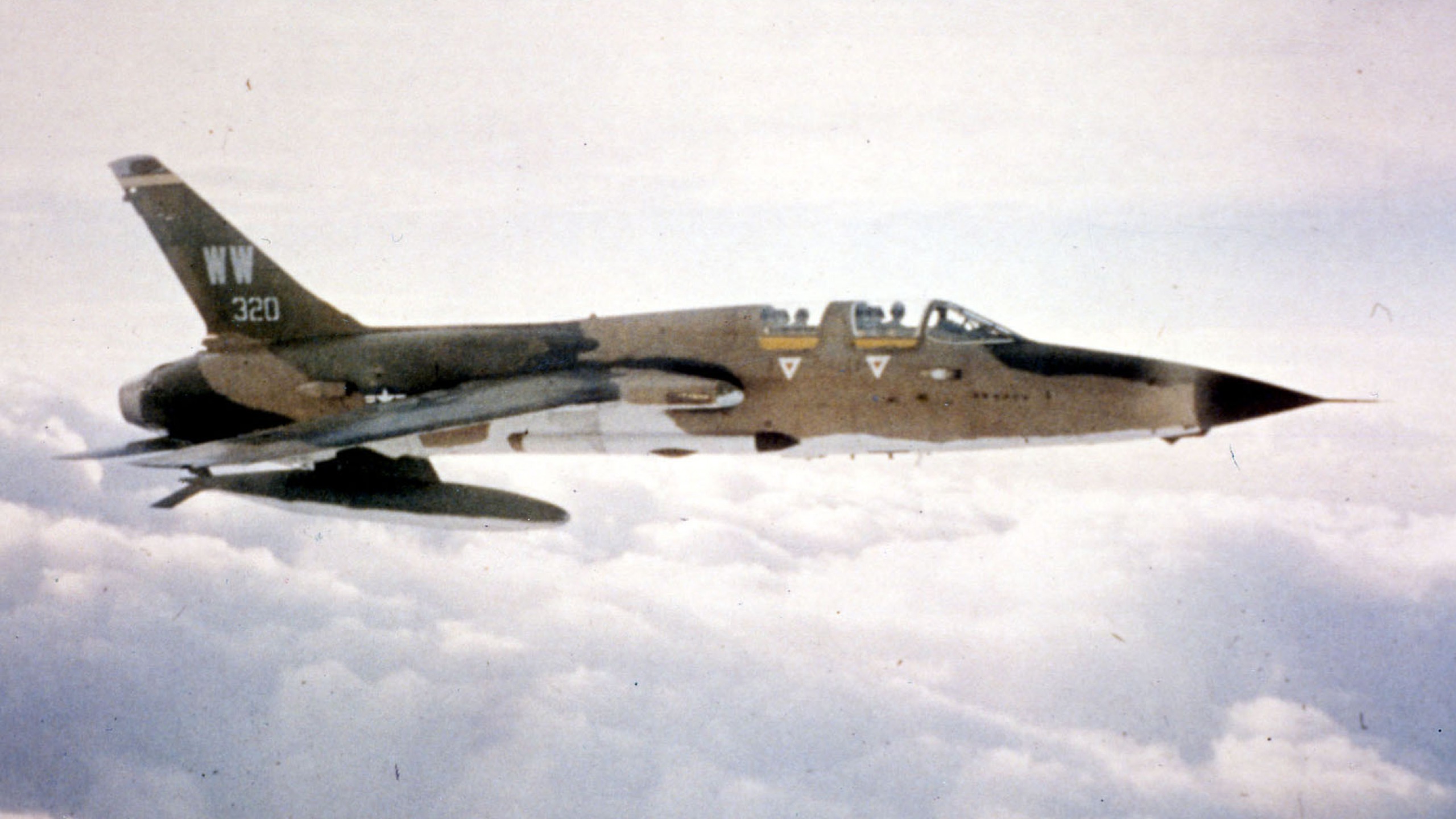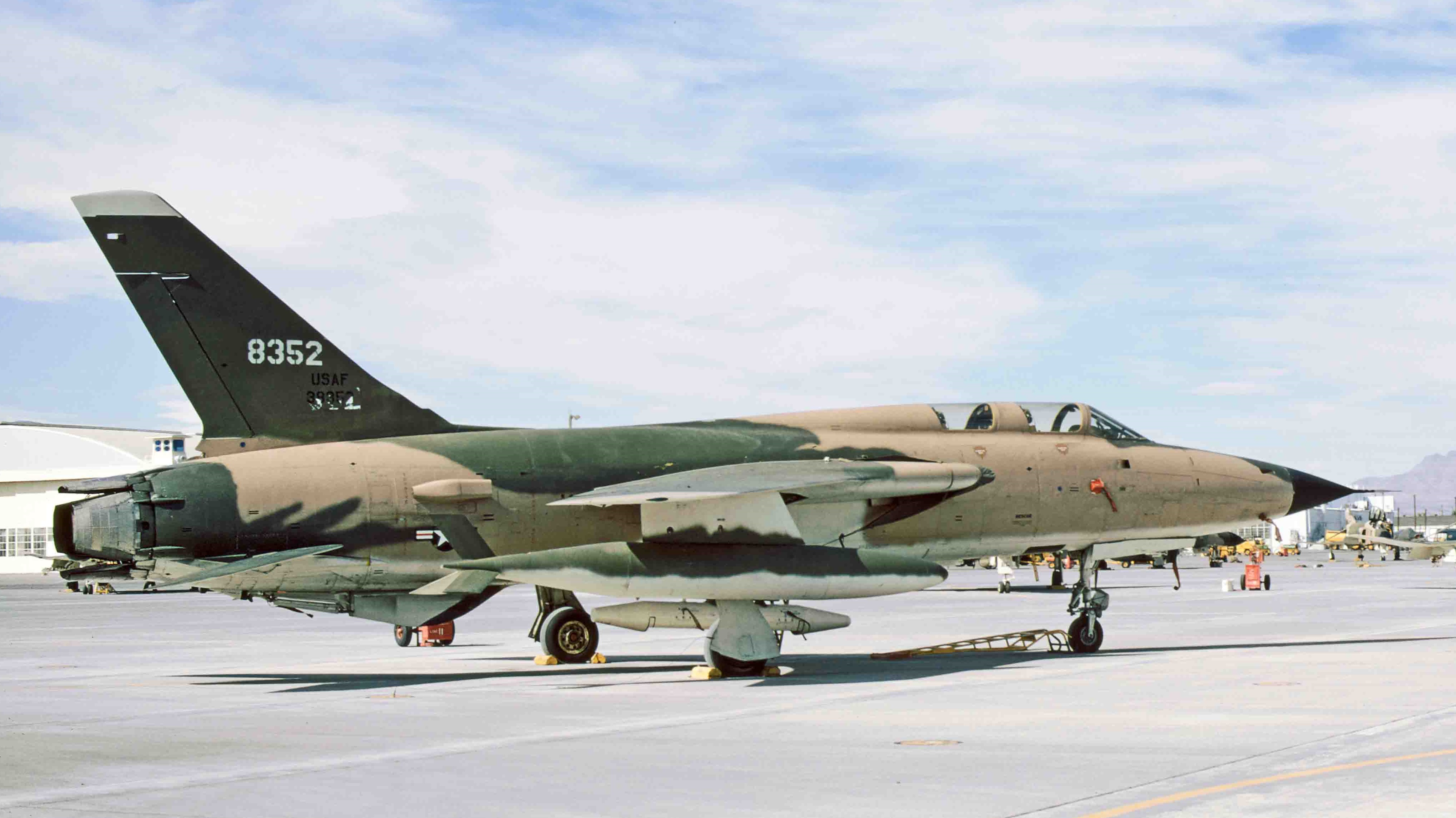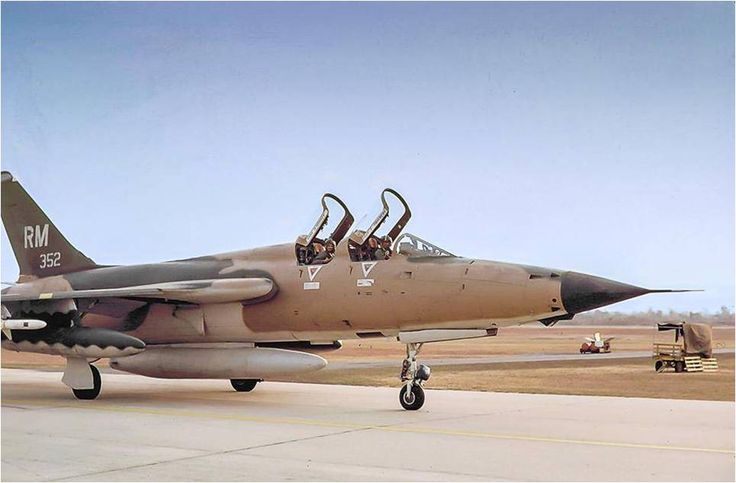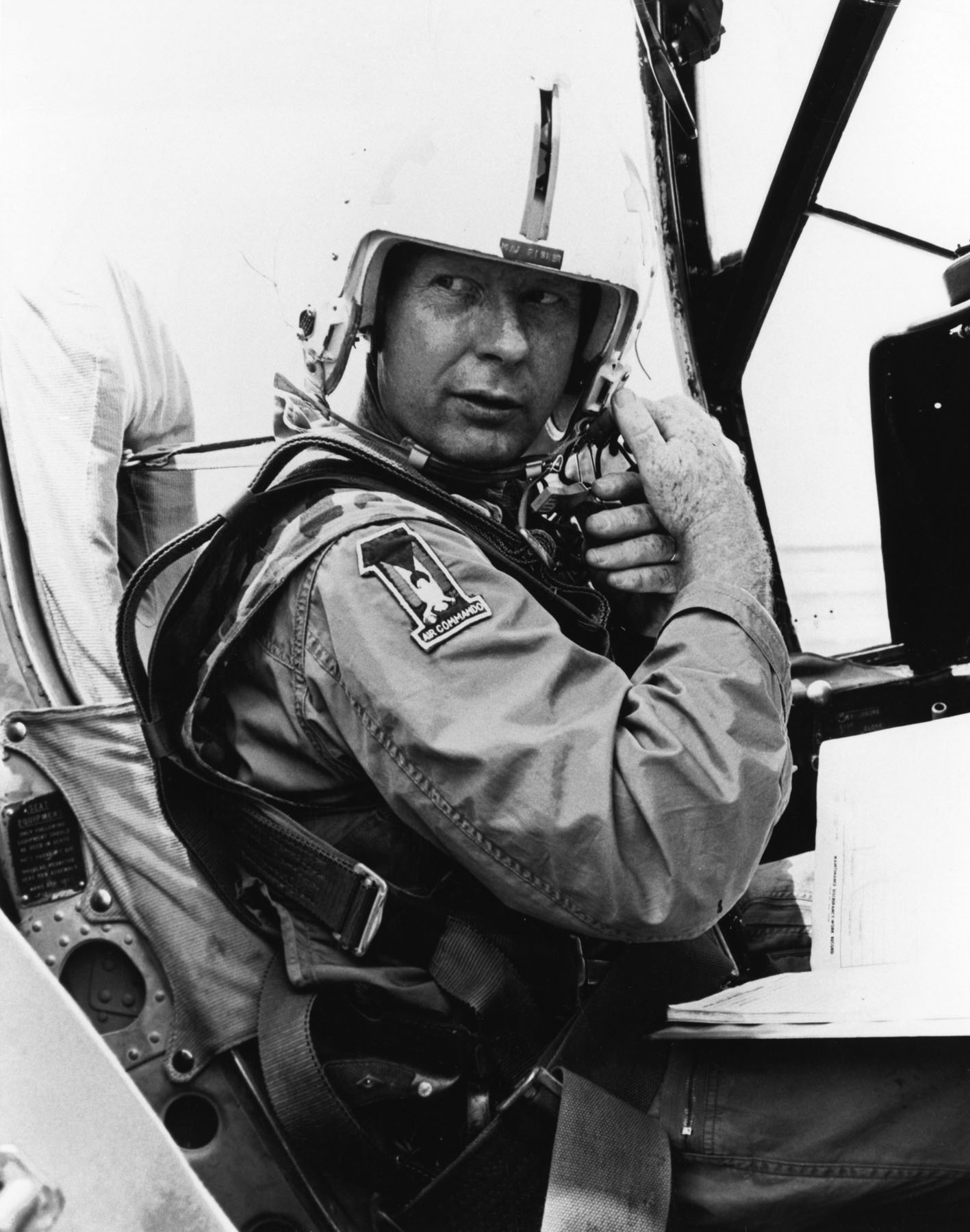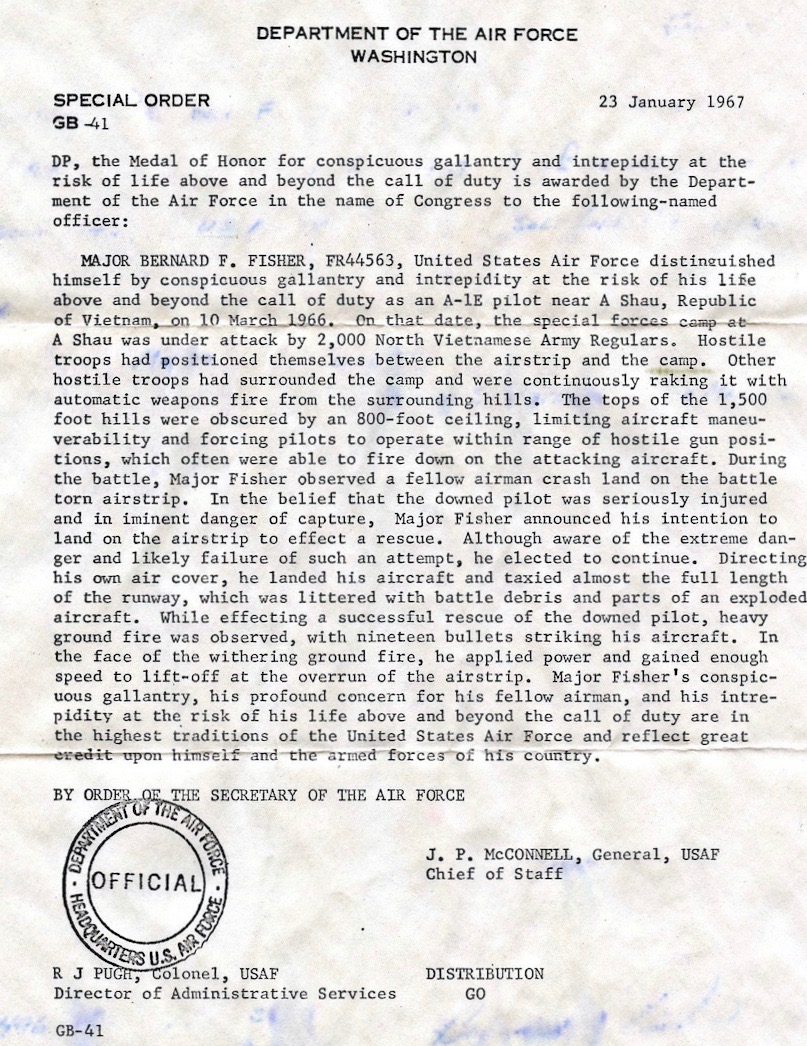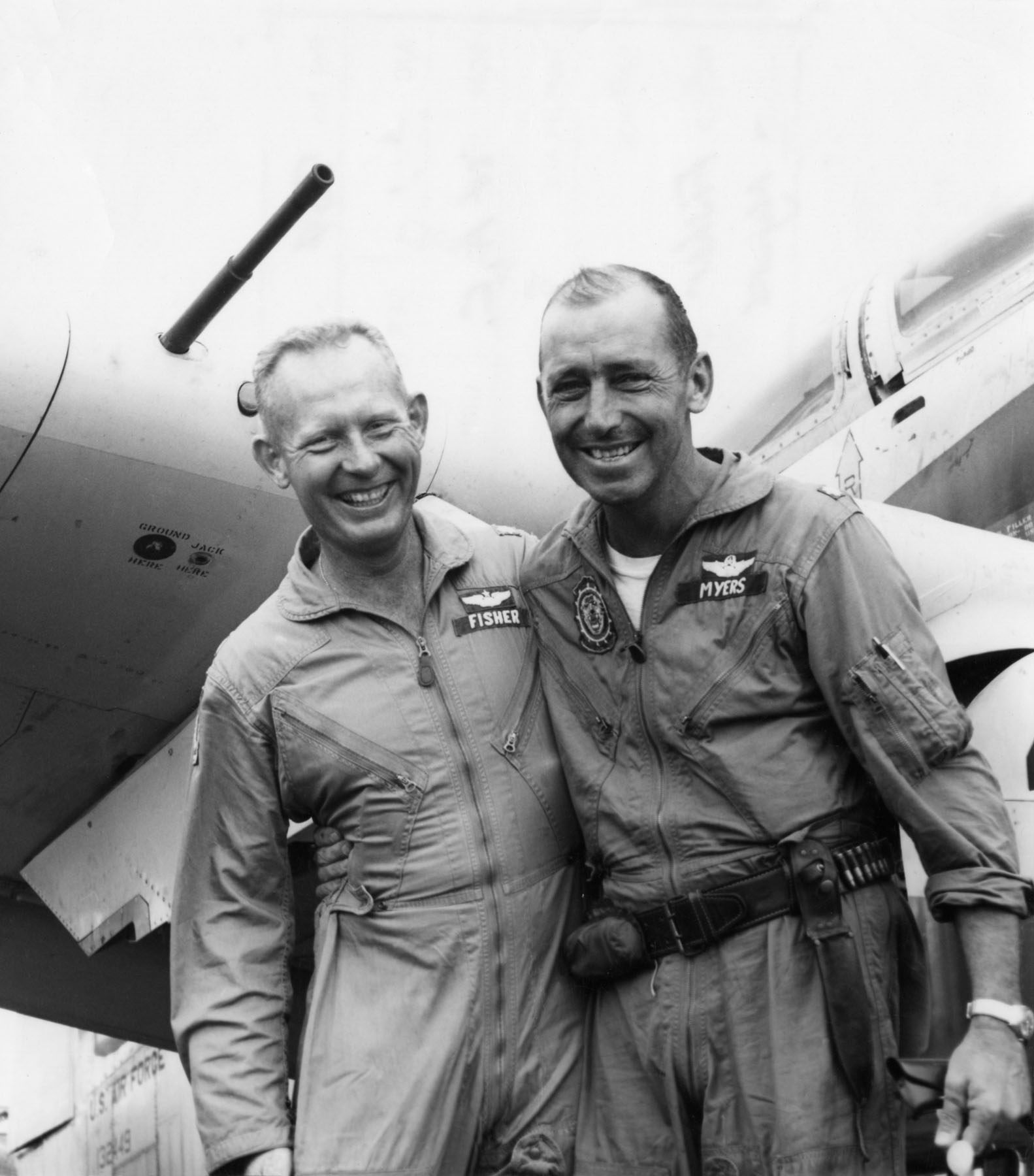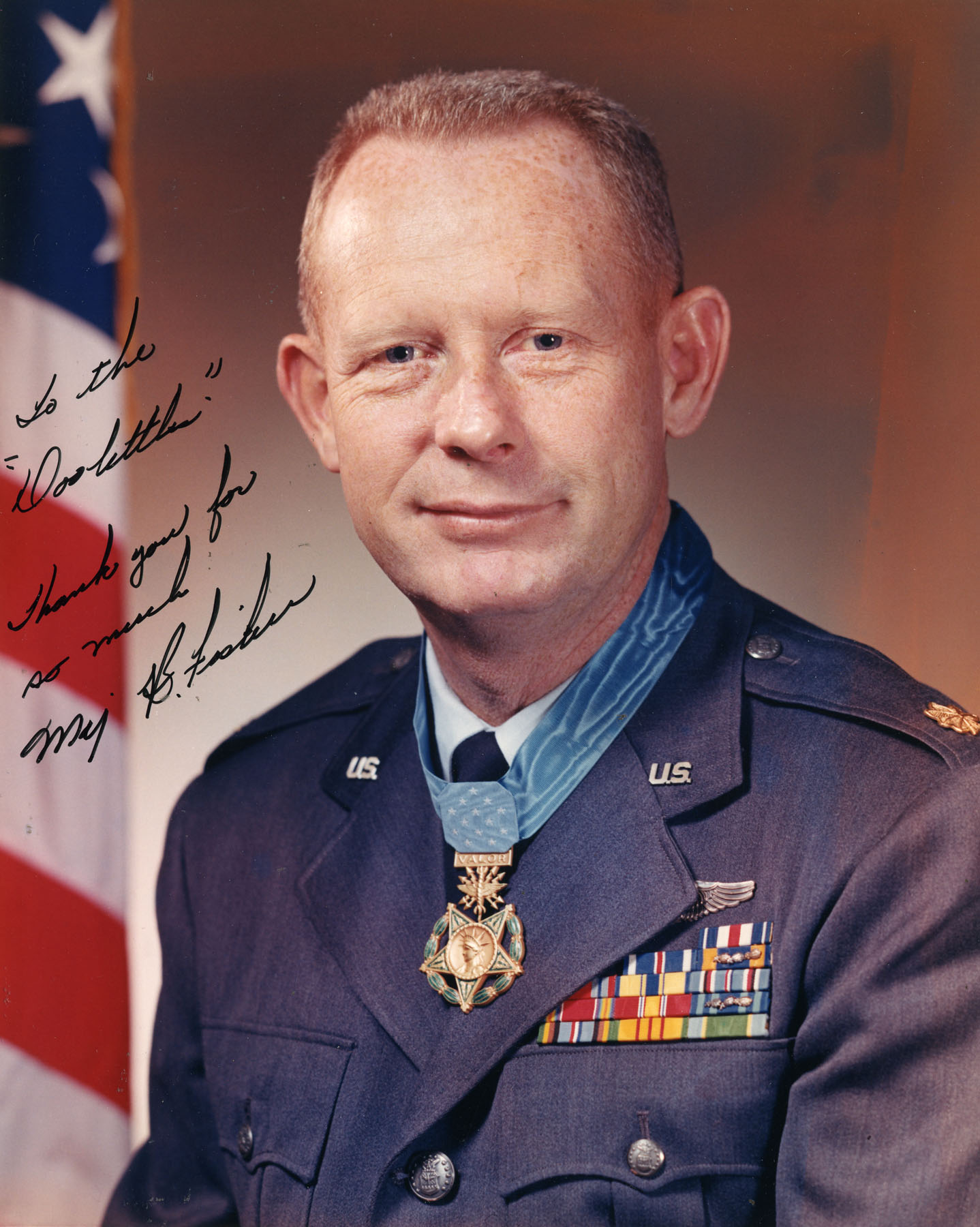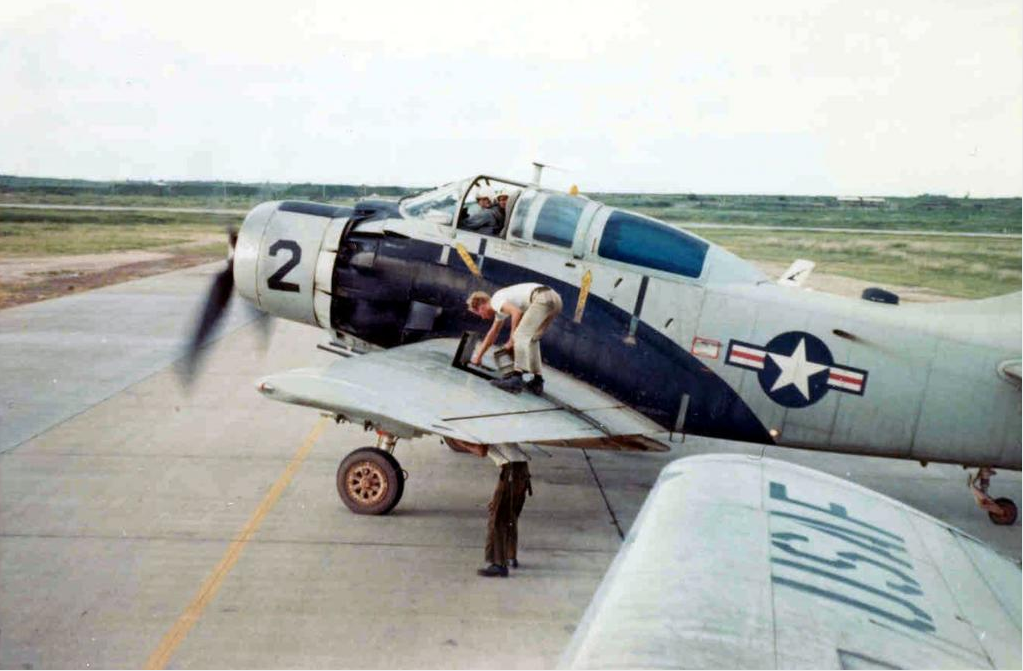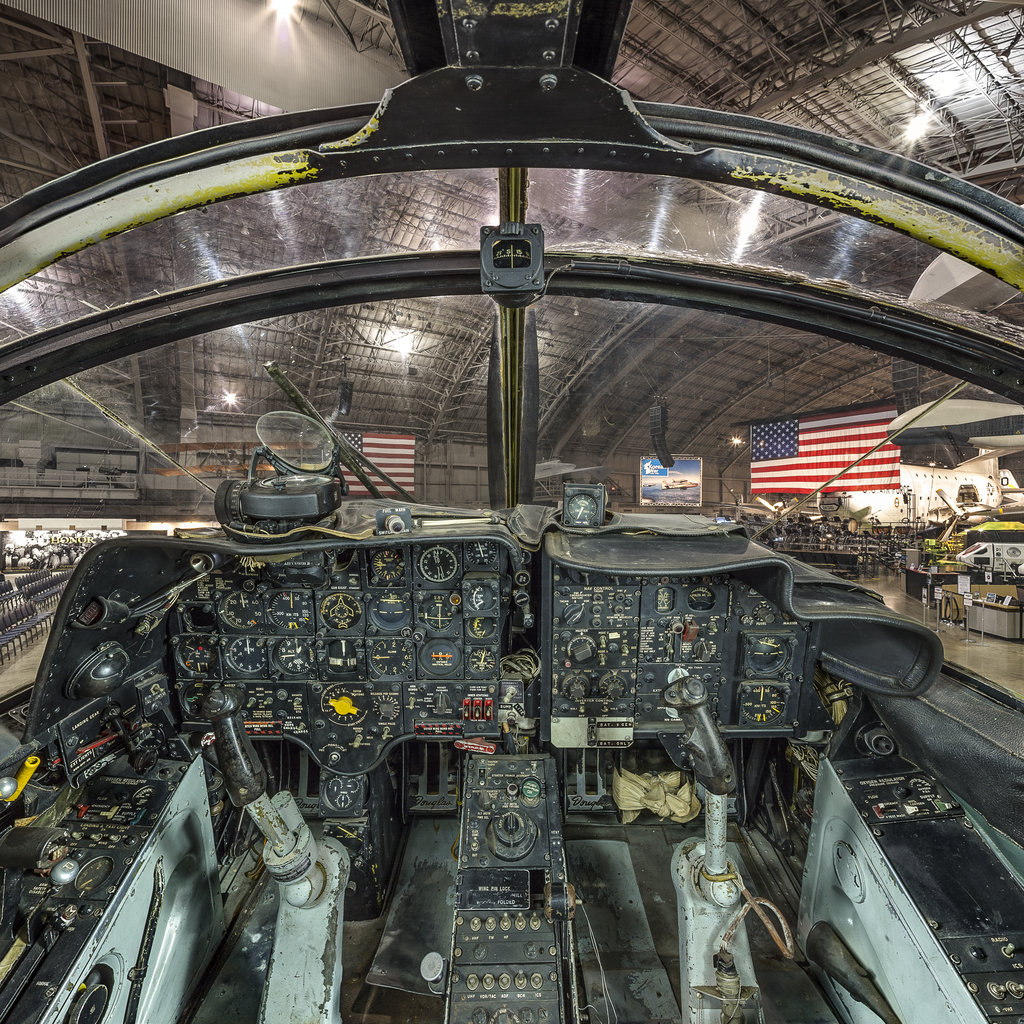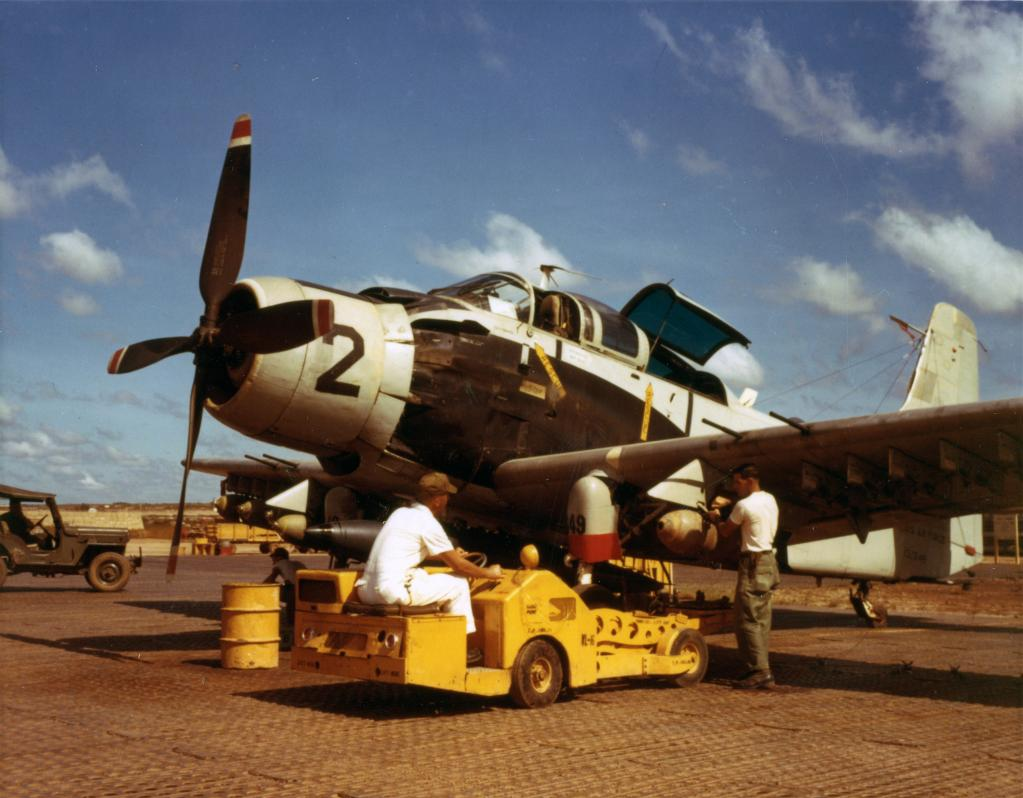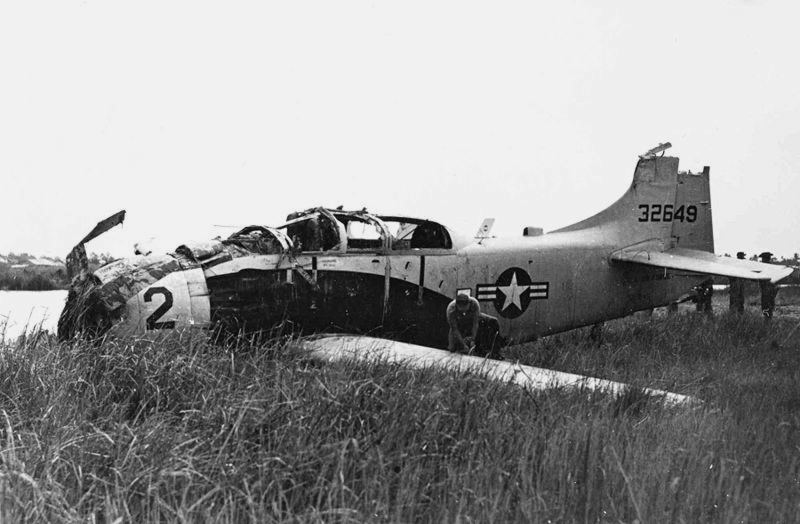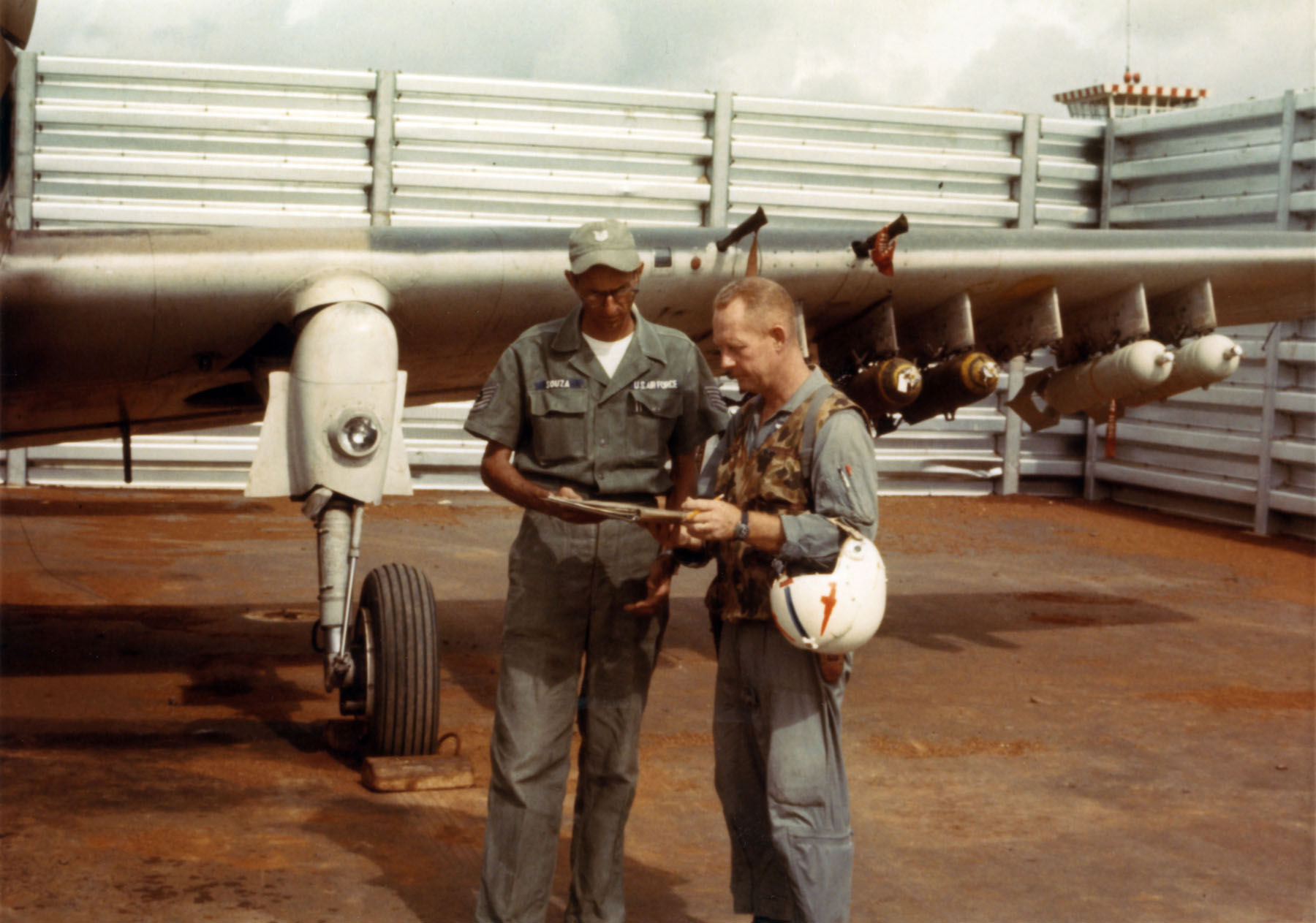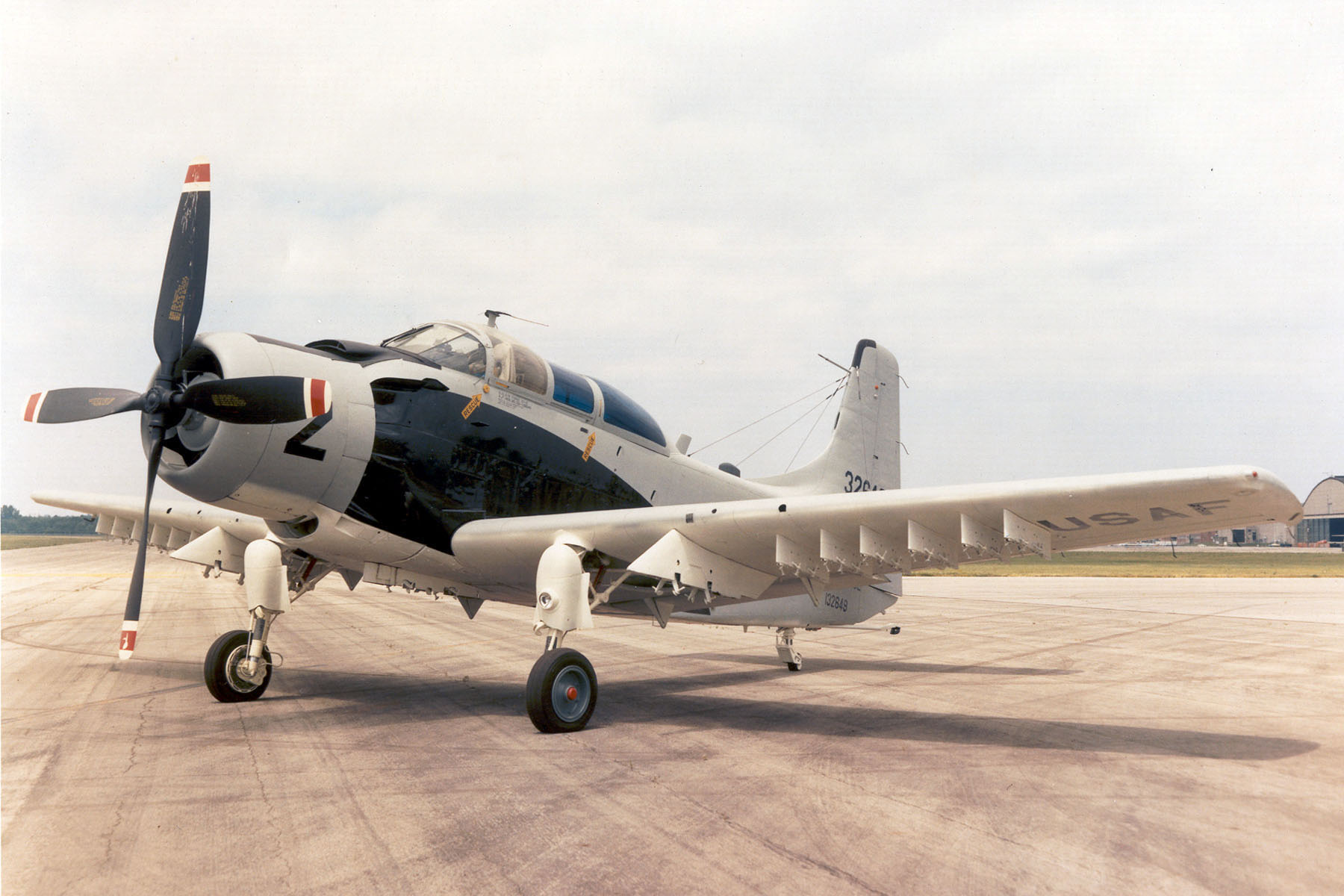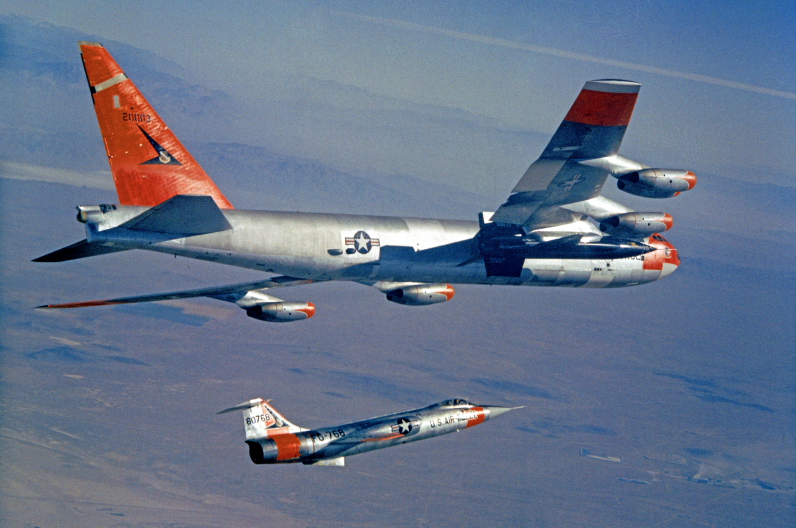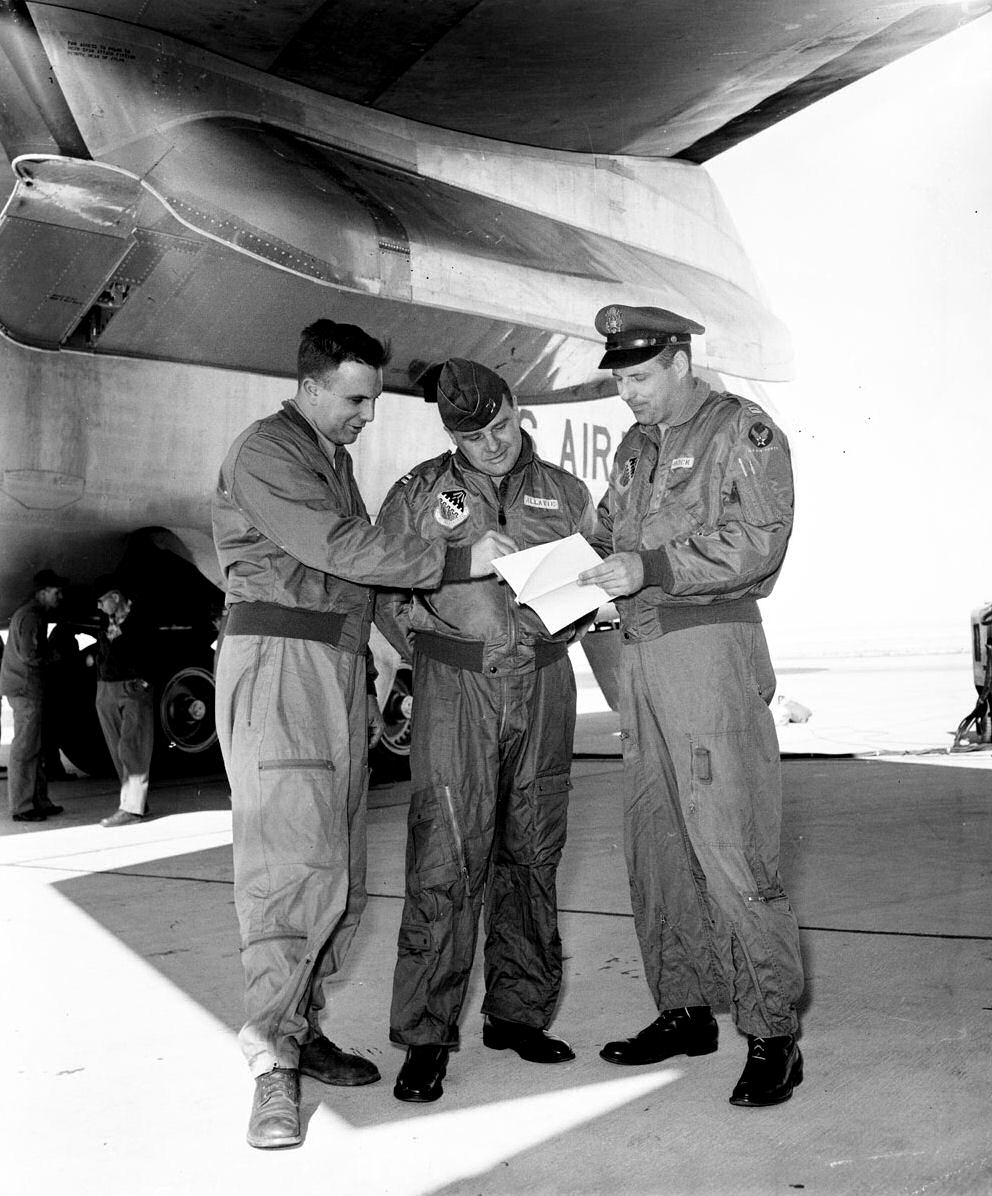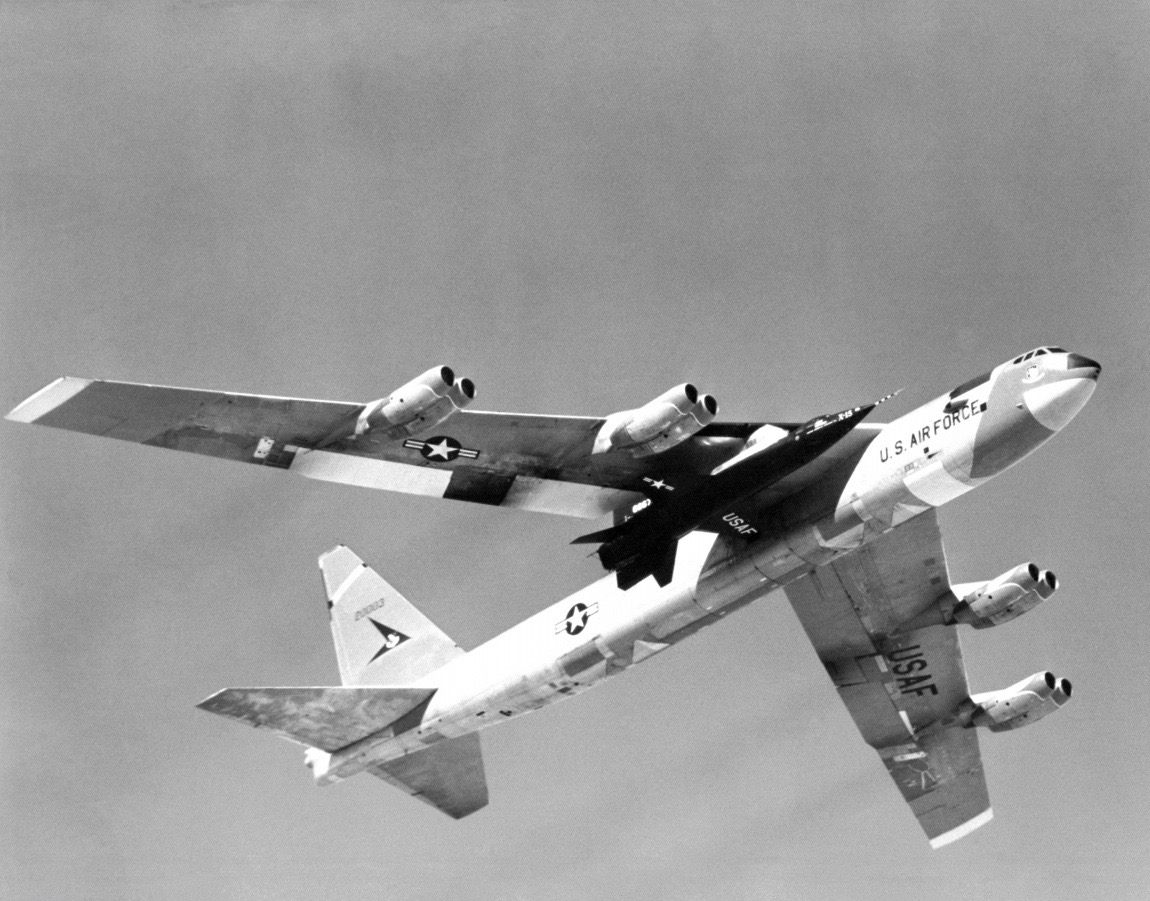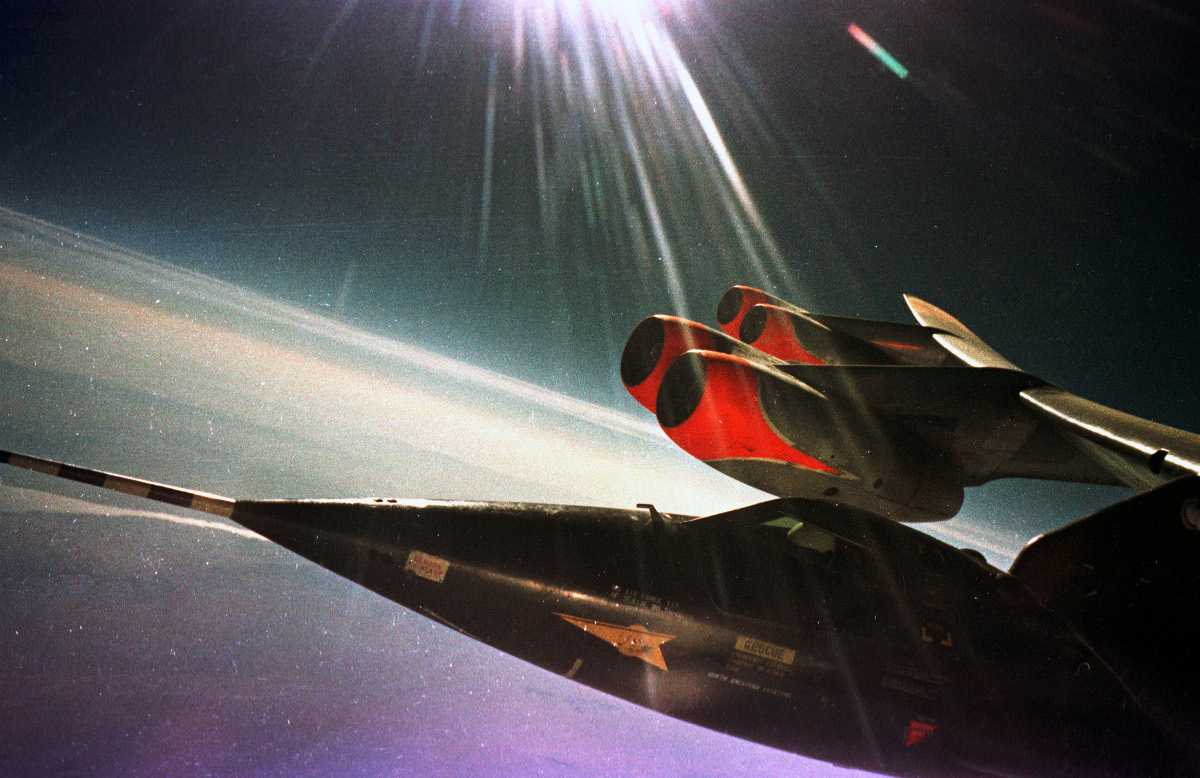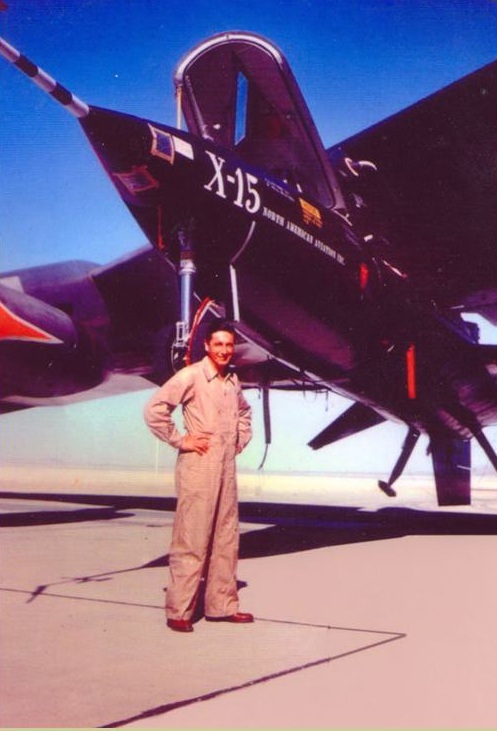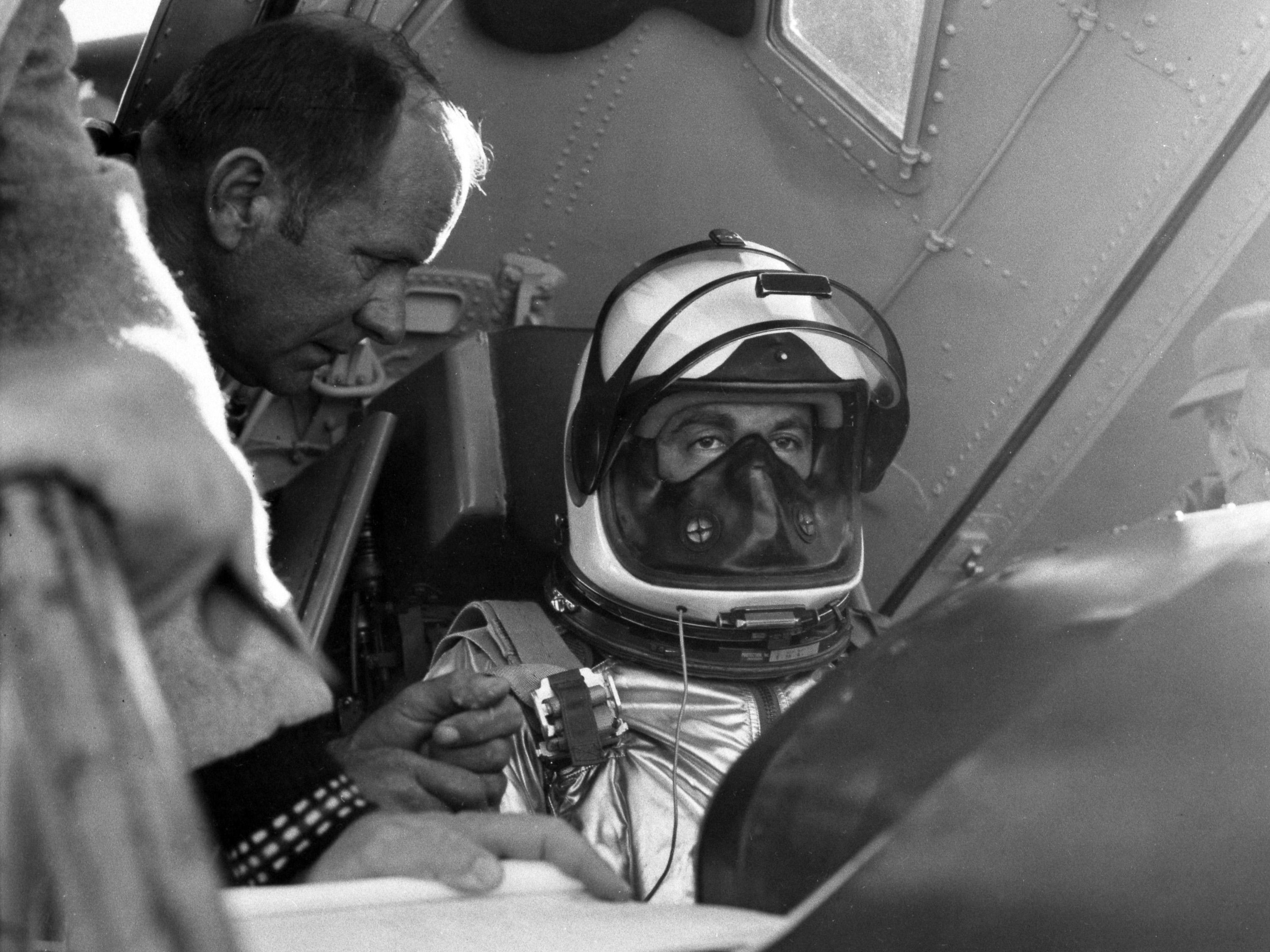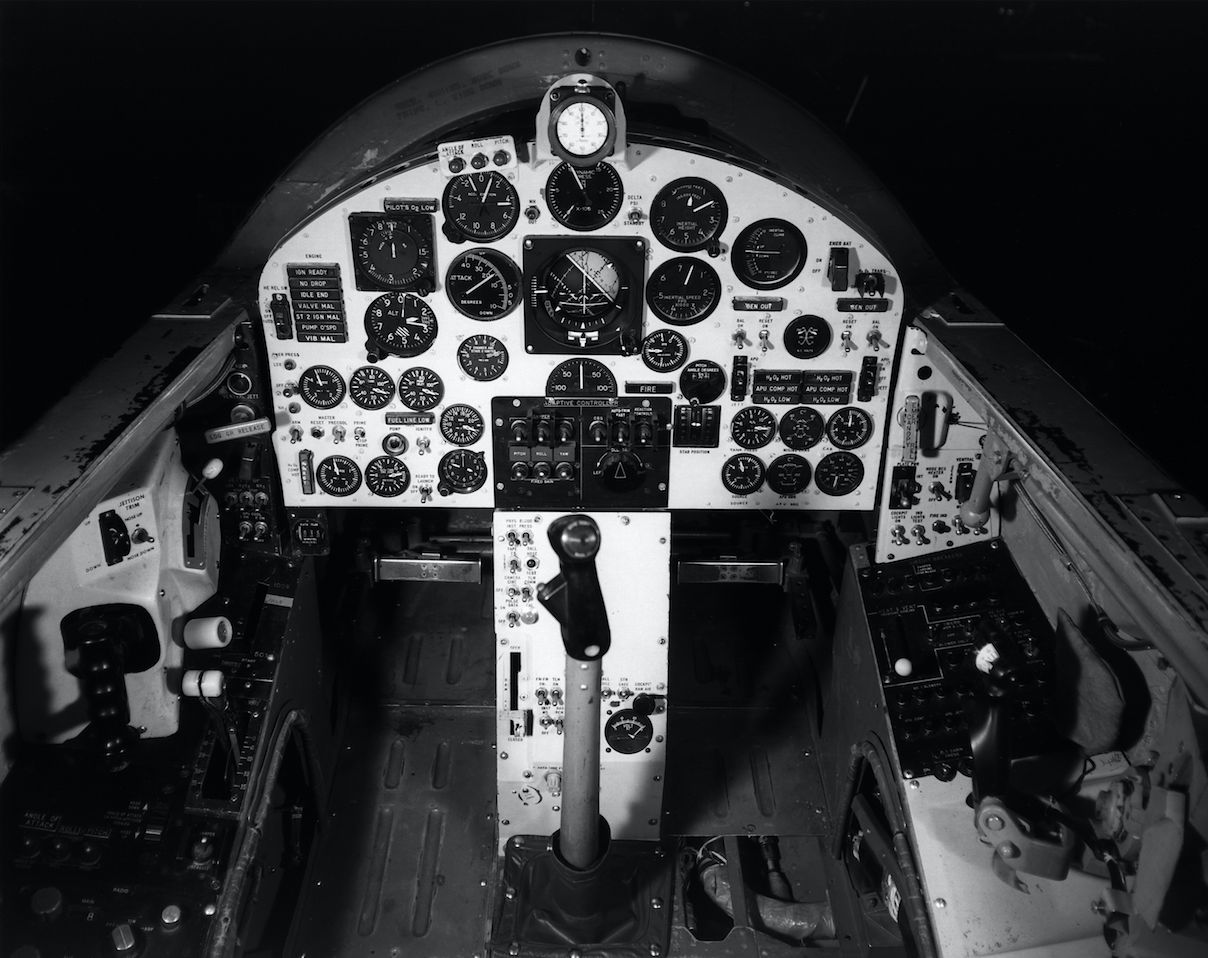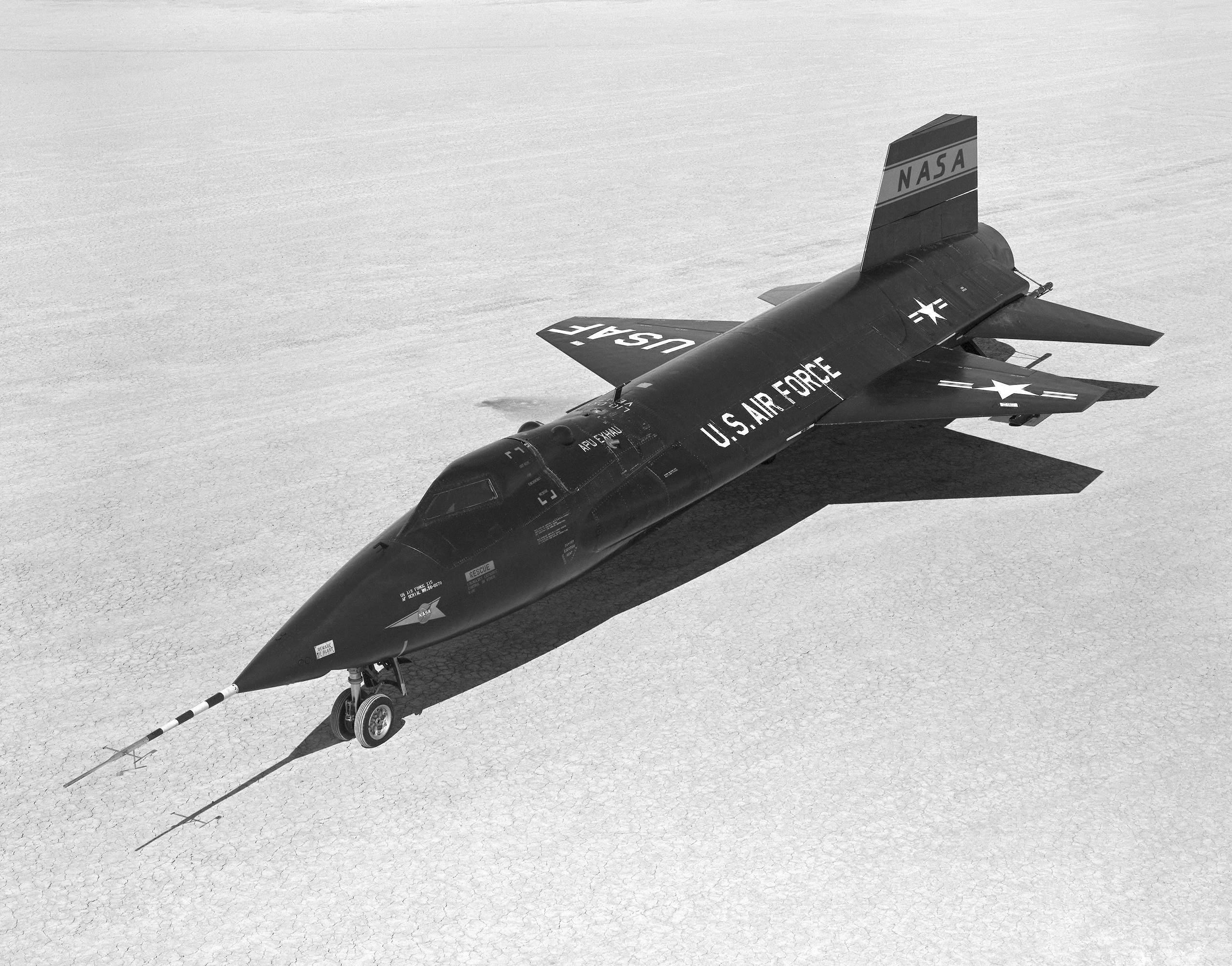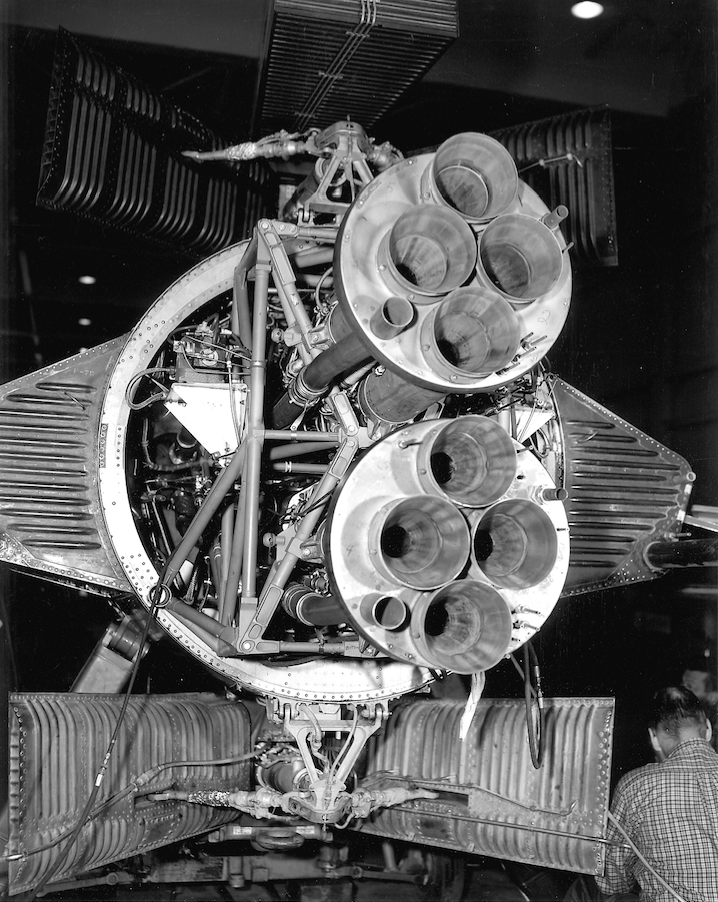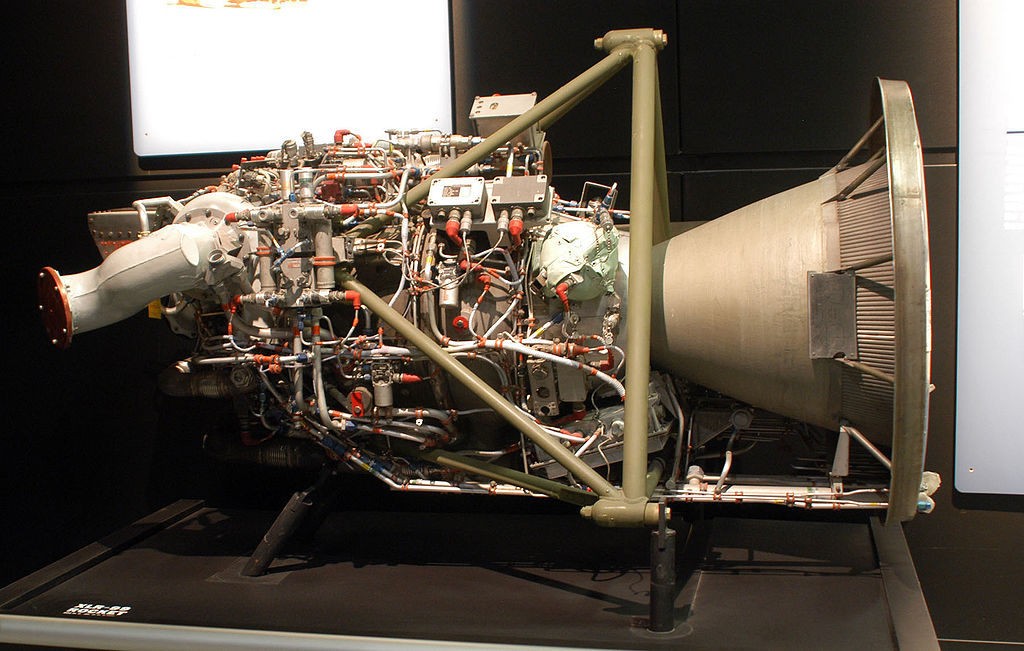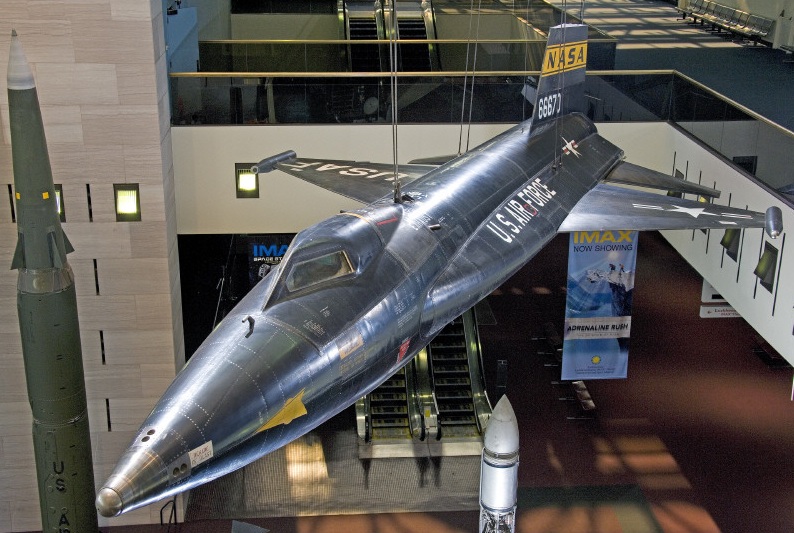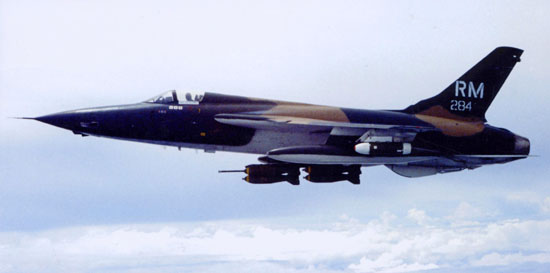
10 March 1967: Captain Max C. Brestel, United States Air Force, a pilot assigned to the 354th Tactical Fighter Squadron, 355th Tactical Fighter Wing at Takhli Royal Thai Air Force Base, was flying a Republic F-105D-31-RE Thunderchief fighter-bomber, serial number 62-4284. His call sign was “Kangaroo 03.” During an attack on the Thai Nguyen Steel Mill, the single most heavily-defended target in North Vietnam, Captain Brestel engaged and shot down two enemy MiG-17 fighters.
This was the first time during the Vietnam War that an American pilot shot down two enemy airplanes during the same mission. The following description is from an official U.S. Air Force history:
Brestel’s aerial victories became the first USAF double kill of the conflict. At the time, he was flying the third Thunderchief in a flight of four and was tasked with suppressing flak in and around the Thai Nguyen steel mill and supporting other F-105 strike forces. Brestel relates how his two victories came about:
“We proceeded to the target via the Red River to a point north of the target, where we turned south. Numerous SAM and MiG warnings had been transmitted. Also, the 388th Wing, which had preceded us on the target, had encountered MiGs.
“As the flight pulled up to gain altitude for delivering our ordnance, I sighted two MiG-21s making a pass at Col. Gast [Lt. Col. Philip C. Gast, the flight leader] from his 4 o’clock position. I was in lead’s 8:30 o’clock position. I broke toward the MiGs and passed across his tail. They broke off the attack and I continued on my dive delivery. Flak was normal for the area. We delivered our ordnance as planned.”
As the flight pulled out at an altitude of approximately 3,000 to 4,000 feet, Gast called MiGs at 2 o’clock low. ‘Let’s go get them,’ he urged. ‘I’m with you,’ Brestel acknowledged as he spotted the flight of four MiG-17s in staggered trail heading north at approximately 1,500 feet. Behind them was another flight of four. Brestel’s narrative continues:
“I observed all MiGs light their afterburners. Colonel Gast began firing at one of the first two MiGs. I observed the second two begin to fire at Colonel Gast. I called a break and closed within 300–500 feet of the number four MiG. I fired an approximate 2½ second burst at him as he was in a right turn. I observed hits in the wing and fuselage. The MiG reversed into a left turn. I fired another 2½ second burst into him, observing hits in the left wing, fuselage and canopy, and a fire in the left wing root. The aircraft rolled over and hit the ground under my left wing. I then closed 300 feet on the number three MiG, which was firing at Colonel Gast. He was in a right turn and again I fired a 2½ second burst, observing hits in wing, fuselage, etc. He also reversed to the left and I fired another 2½ second burst, observing more hits and pieces flying off the aircraft. The aircraft appeared to flip back up over my canopy and disappeared behind me. we broke off the engagement at this time after approximately 1½ to 2 minutes of combat. A SAM was fired at us and more flak as we exited the area.
“I know I destroyed the first MiG, as I saw him crash. I did not see the pilot bail out and doubt if he was alive, since hits were observed in the cockpit and the canopy broke up. My wingman, Lt. Weskamp [1st Lt. Robert L. Weskamp] also observed the MiG hit the ground.
“I feel I also destroyed the second MiG, as the range was the same and hits were observed in the same areas, i.e., fuselage, wings, etc. Also, his last maneuver could not be considered normal. The aircraft appeared to be in a violent pitch-up or tumble and out of control… However, because he pitched up over and behind me, I did not see him strike the ground.”
Brestel was given credit for destroying both MiGs.
— Aces and Aerial Victories: The United States Air Force in Southeast Asia 1965–1973, by R. Frank Futrell, William H. Greenhalgh, Carl Grubb, Gerard E. Hasselwander, Robert F. Jakob and Charles A. Ravenstein, Office of Air Force History, Headquarters USAF, 1976, Chapter II at Pages 44 and 45.
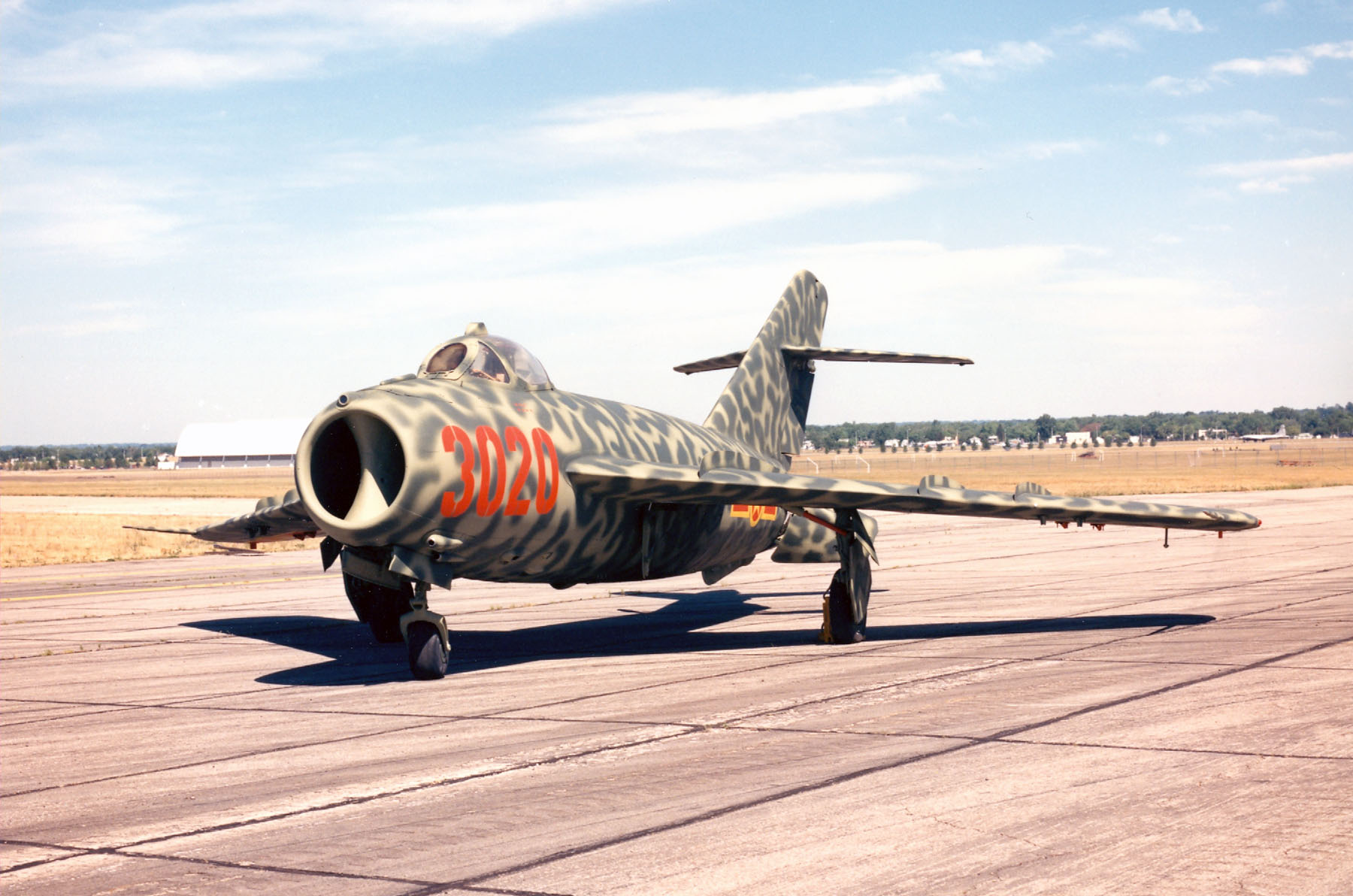
Vietnamese sources identified one of the downed MiG-17 fighters as being of Z Group, Korean People’s Air Force, flown by Kim Quang Wook, who was killed.
 The F-105 was the largest single-seat, single-engine combat aircraft in history. It was designed as a Mach 2+ tactical nuclear strike aircraft and fighter-bomber. The fuselage of the F-105B incorporated the “area rule” which gave the Thunderchief its characteristic “wasp waist” shape.
The F-105 was the largest single-seat, single-engine combat aircraft in history. It was designed as a Mach 2+ tactical nuclear strike aircraft and fighter-bomber. The fuselage of the F-105B incorporated the “area rule” which gave the Thunderchief its characteristic “wasp waist” shape.
The F-105D Thunderchief is 64 feet, 5.3 inches (19.642 meters) long with a wingspan of 34 feet, 11.2 inches (10.648 meters) and overall height of 19 feet, 8.4 inches (6.005 meters). The total wing area was 385 square feet (35.8 square meters). Its wings were swept 45° at 25% chord. The angle of incidence was 0° and there was no twist. The wings had 3° 30′ anhedral. The F-105D-31 has an empty weight of 26,855 pounds (12,181 kilograms) and a maximum takeoff weight of 52,838 pounds (23,967 kilograms).
 The Thunderchief was powered by one Pratt & Whitney J75-P-19W engine. The J75 is a two-spool axial-flow afterburning turbojet with water injection. It has a 15-stage compressor section (8 low- and and 7 high-pressure stages) and 3-stage turbine section (1 high- and 2 low-pressure stages.) The J75-P-19W is rated at 14,300 pounds of thrust (63.61 kilonewtons), continuous power; 16,100 pounds (71.62 kilonewtons), Military Power (30-minute limit); and Maximum Power rating of 24,500 pounds (108.98 kilonewtons) with afterburner (15-minute limit). The engine could produce 26,500 pounds of thrust (117.88 kilonewtons) with water injection, for takeoff. The J75-P-19W is 21 feet, 7.3 inches (6.586 meters) long, 3 feet, 7.0 inches (1.092 meters) in diameter, and weighs 5,960 pounds (2,703 kilograms).
The Thunderchief was powered by one Pratt & Whitney J75-P-19W engine. The J75 is a two-spool axial-flow afterburning turbojet with water injection. It has a 15-stage compressor section (8 low- and and 7 high-pressure stages) and 3-stage turbine section (1 high- and 2 low-pressure stages.) The J75-P-19W is rated at 14,300 pounds of thrust (63.61 kilonewtons), continuous power; 16,100 pounds (71.62 kilonewtons), Military Power (30-minute limit); and Maximum Power rating of 24,500 pounds (108.98 kilonewtons) with afterburner (15-minute limit). The engine could produce 26,500 pounds of thrust (117.88 kilonewtons) with water injection, for takeoff. The J75-P-19W is 21 feet, 7.3 inches (6.586 meters) long, 3 feet, 7.0 inches (1.092 meters) in diameter, and weighs 5,960 pounds (2,703 kilograms).
The maximum speed of the F-105D was 726 knots (835 miles per hour/1,345 kilometers per hour) at Sea Level (Mach 1.09) and 1,192 knots (1,372 miles per hour (2,208 kilometers per hour) at 36,089 feet (11,000 meters) (Mach 2.08). The combat ceiling was 51,000 feet (15,545 meters). The F-105D’s combat radius varied with the type of mission from 277 to 776 nautical miles (319–893 statute miles/513–1,437 kilometers). The maximum ferry range was 1,917 nautical miles (2,206 statute miles/3,550 kilometers).
The F-105D was armed with one 20 mm M61A1 Vulcan rotary cannon and 1,028 rounds of ammunition. It has an internal bomb bay and can carry bombs, missiles or fuel tanks on under wing and centerline hardpoints. The maximum bomb load consisted of 16 750-pound (340 kilogram) bombs. For tactical nuclear strikes, the F-105D could carry one B57 or three B61 nuclear bombs.
The F-105 Thunderchief was a supersonic tactical fighter bomber rather than an air superiority fighter. Still, during the Vietnam War, F-105s shot down 27 enemy MiG fighters. 24 of those were shot down with the Thunderchief’s Vulcan cannon.
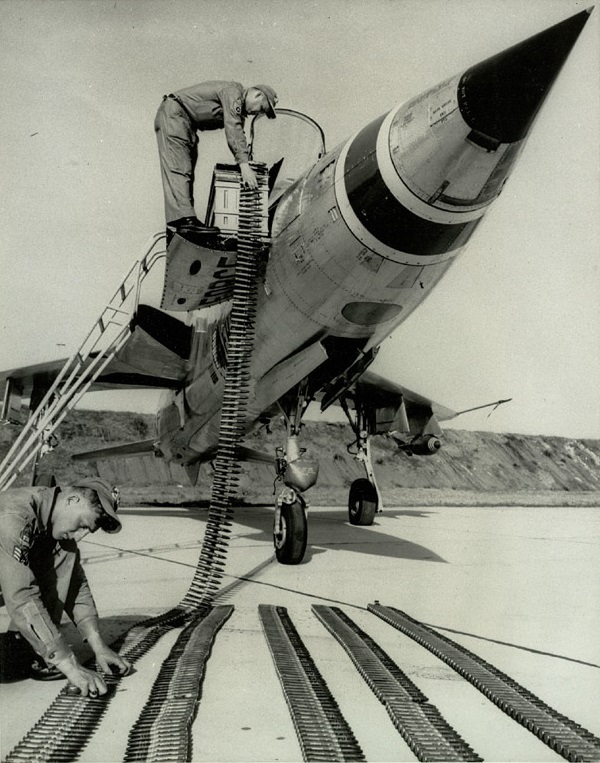
Republic Aviation Corporation built 833 F-105 Thunderchief fighter bombers at its Farmingdale, New York factory. 610 of those were single-seat F-105Ds. Of the 833 F-105s, 395 were lost during the Vietnam War. 334 were shot down, mostly by antiaircraft guns or missiles, and 17 by enemy fighters. Another 61 were lost due to accidents. The 40% combat loss is indicative of the extreme danger of the missions these airplanes were engaged in.
62-4284 is the only F-105 Thunderchief officially credited with shooting down three enemy fighters during the Vietnam War. Flown by Captain Gene I. Basel, also of the 354th Tactical Fighter Squadron, 62-4284 was “Bison 02” on an attack against the Canal de Rapides Bridge, 27 October 1967. Captain Basel shot down a MiG-17 with the Thunderchief’s 20 mm cannon. The VPAF pilot ejected.
Having survived the Vietnam War, 62-4284 crashed during a peacetime training mission, 4 miles south west of Clayton, Oklahoma, 12 March 1976. The pilot, Captain Larry L. Kline, 465th Tactical Fighter Squadron, Hill Air Force Base, Utah, was killed.
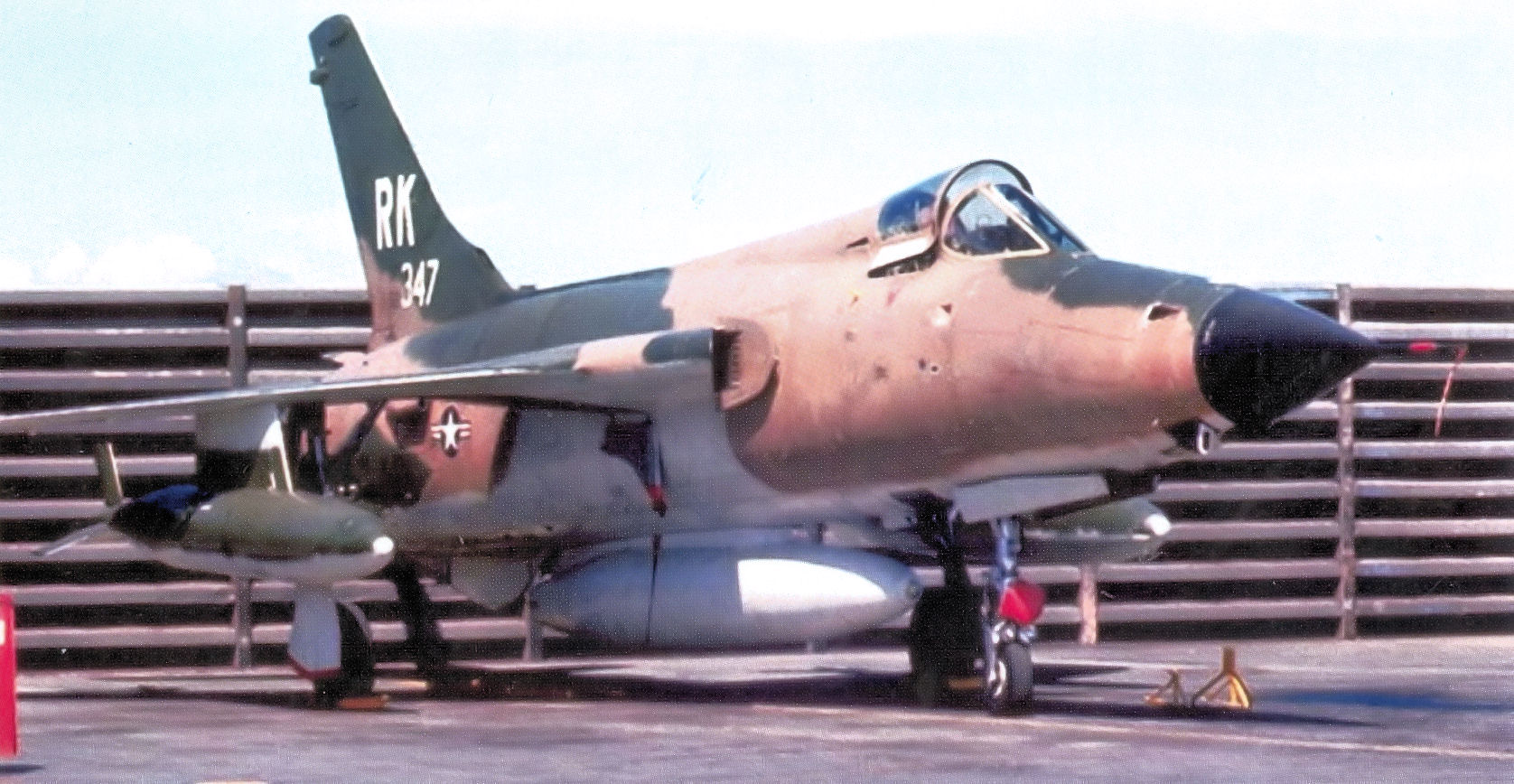
© 2021, Bryan R. Swopes
